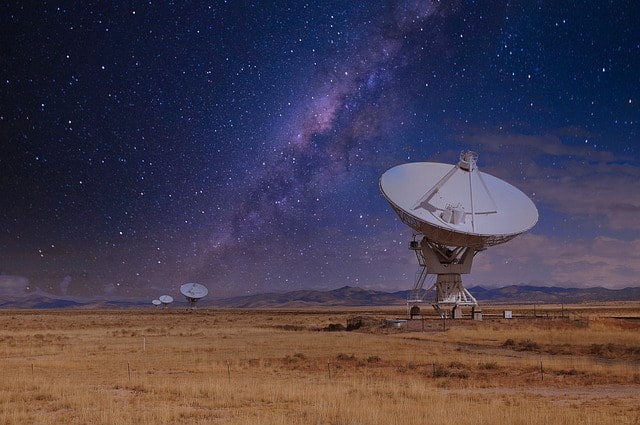Scientists at Cornell University in the US have answered an unusual question: what if we’re not the only ones looking for life on other planets? And if such, how could extraterrestrial astronomers detect that Earth is habitable, using their telescopes?
How do we seek life on other planets?
Humanity has spent centuries trying to find signs of life on other planets. Since Galileo invented the first telescope in the early 17th century, the means of probing space have become much more sophisticated, and today we receive high-resolution images of galaxies millions of light-years away.
Since the first exoplanet was discovered in 1992, their number has grown substantially: we now know of 42,292 planets about 3,185 stars. Among them, there are many that are potentially habitable, but due to the method we use to contemplate them it is difficult to verify.
Most of these planets were discovered using the so-called astronomical transit: the planet ‘gives itself away’ by passing over a bright star, dulling its light a bit. This method is quite old but in the future, it will make it possible to study whether planets have an atmosphere and what gases it is made of.
To deepen our understanding of exoplanets, NASA plans to launch the James Webb Space Telescope (JWST) in October 2021. Its sensitivity will make it possible to detect life markers in the atmospheres of exoplanets: oxygen or methane.
Task for space scientists
If extraterrestrial astronomers had JWST-type observatories, they could also detect that there is life on that blue planet within the solar system in the Milky Way, and it is more or less intelligent. However, using the same transit method, how many stars would Earth look like?
To estimate the number of stars from which Earth is seen passing through the solar disk, the scientists turned to the Transiting Exoplanet Survey Satellite (TESS) and Gaia. Calculations have shown that at a distance of 326 light years there are 1,004 stars, similar to the Sun, that satisfy this condition. The results were published in the Monthly Notices of the Royal Astronomical Society.
Moreover, within this thousand there should be around 100 planets in the habitable zone, where there can be life. From 508 stars you could see the Earth pass through the Sun for 10 hours straight.
“If observers [on these planets] were looking for us, they could see signs of the biosphere in the atmosphere of our pale blue dot. And we can even see some of these brighter stars in our sky without binoculars or a telescope.”
Explained by Lisa Kaltenegger, an astronomer at Cornell University and lead author of the research.
Most of the stars are relatively far away: the closest star appears 28 light-years from the Sun. The most promising star in this sense is Teegarden in the constellation Aries. It is only 12 light years away and has two planets in the habitable zone. Starting in 2044, the transits of the Earth will be seen from this star, which will be observed for 450 years.
